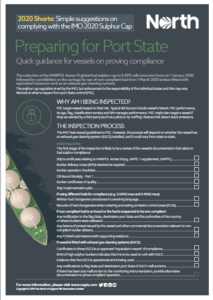The North P&I Club issued a guidance in light of the upcoming 2020 sulphur cap, to help vessels be complaint with the fuel requirements of each port when being inspected by port state control authorities; Thus, the Club informs on what to expect when calling ports in different states.
#1 PSC target vessels based on their risk
The port state control authorities will inspect the vessel posing several risk factors, such as vessel’s historic PSC performance, its age, flag, classification society and ISM manager performance.
Also, PSC may also target a vessel if they are alerted by a third party, such as a pilot, or by ‘sniffing’ devices that detect stack emissions.
#2 Inspection process
Except IMO’s PSC guidance, the inspection depends on the factor whether the vessel has an exhaust gas cleaning system (EGCS) installed, and this may be different from state to state.
PSC inspectors will ask to see several documents, as:
- Ship’s certificates relating to MARPOL Annex VI (e.g. IAPPC + supplement, EIAPPC)
- Bunker delivery notes (BDN) retained as required
- Bunker operation checklists
- Oil Record Book(s)
- Bunker certificates of quality
- Ship implementation plan
North alerts that if the port State believes that the vessel and its equipment are not in line with the documentation or if the crew seems unfamiliar with the operations, then a more thorough inspection will follow.
In the meantime, when a ship is not equipped with an exhaust gas clean system (EGCS) or the use of it is banned form the port, then the PSC are likely to check that its fuel is compliant.
This may require testing of:
- the MARPOL delivered sample (drawn at time of bunkering and retained by the vessel)
- the not-in-use onboard sample (drawn from the vessel’s bunker storage tanks during inspection)
- The in-use sample (drawn as close as possible to the engine inlet during inspection)
Learn more on “Preparing for PSC guidance” herebelow






























































